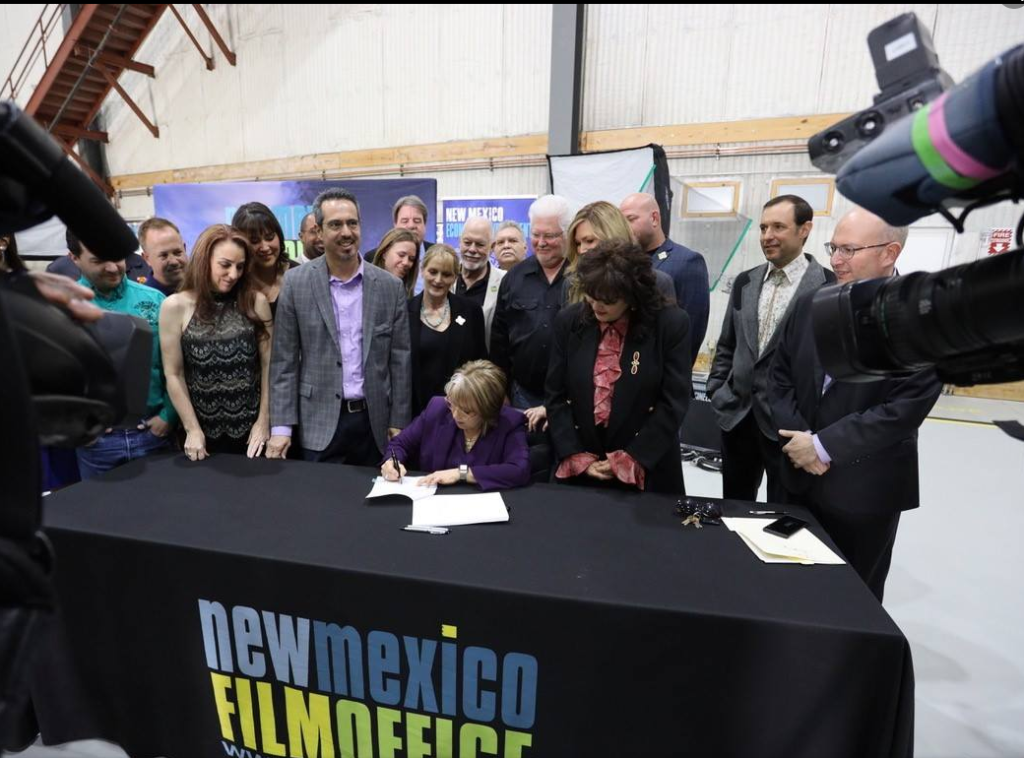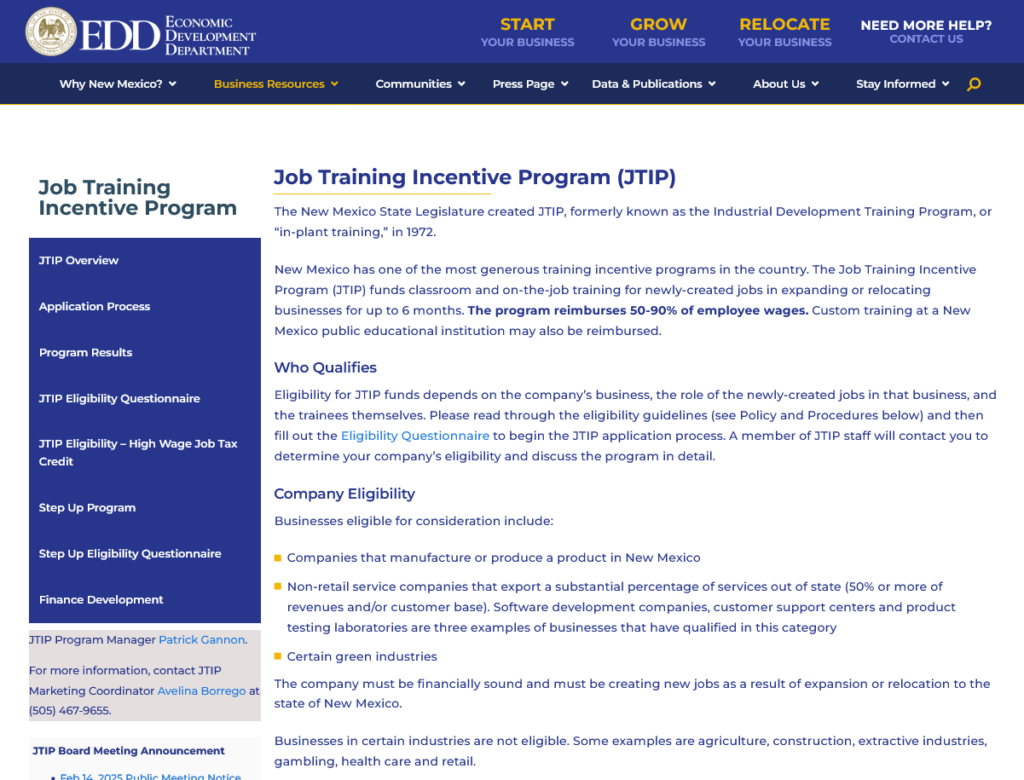Governor and Legislators Value Movie Stars and Film Workers Way More Than Health Care Workers.



(Images above, left and right, from New Mexico Film Office.)
As Movie Stars Make Millions, Subsidized by State Film Program, Governor and Legislators Deny Living Wage to Thousands of Direct and Personal Caregivers Struggling to Survive.
If you are a worker who cares for an elderly or disabled New Mexican – well, as that old expletive goes you’re “sh*t outta luck” when it comes to making a living.
But if you are a movie star or film worker in New Mexico, as another saying goes, you are likely “rolling in the dough.”
For Hollywood movie stars filming in New Mexico, the state will pay for 25% of their salary if they are a resident of New Mexico (but only up to $5 million for non resident actors).
While the actual pay of movie stars is hard to pin down, it’s fair to assume they make a lot of money – at least compared to most people working in New Mexico.
According to reports of the Governor and her economic team, the median wage for a film worker in New Mexico is about $36/hour, while the median wage for all other New Mexican is about $21/hour. That figures to be $600 more a week for the film worker than other workers.
And about twenty-five cents of every dollar the film worker gets paid is from a subsidy given back to the film company – essentially its a deferred, or re-routed, welfare payment for the resident-worker.
But if you work as a direct care giver – someone caring for a developmentally disabled or elderly New Mexican residents – the Governor and the legislature have set up a system that keeps you poor.
Your pay isn’t enough to afford food, rent and the basics of living week to week.
The controlling leadership of the legislature (composed of predominately self-described progressive Democrats) trip over themselves to assure that film workers are paid a median of over $22/hour more than the paltry $14.61/hour the same legislators vote to fund direct care givers.
(NOTE: while the median wage in New Mexico for caregivers is about $14.61, workers can be paid as little as $12.00 an hour.)
Holding a Boom Mic Over an Actor Pays More Than Safely Assisting A Disabled Person Into Their Bed With a Lift
The median hourly wage for full-time New Mexico crew members of $36.75, is more than twice as much as the median hourly salary paid to the people who care for the most vulnerable New Mexicans.
But that is not the only advantage legislators and the Governor underwrite for film workers – the state also pays 25% of their benefit packages.
Not surprisingly, the benefit packages to film workers is substantially more than those offered to caregivers (in some instances, caregivers have no benefits).
The rates drafted by the Governor and funded by legislators for the wages of direct care givers are unfair and unrealistic.
According to the Massachusetts Institute of Technology’s (MIT) Living Wage Calculator, a wage necessary to live out of poverty in New Mexico should be at least $21.01 for a single adult.
If the worker has children, then the amount needed increases as the following snapshot from the MIT Living Wage Calculator denotes:

If caregiver hourly wages were raised to a living wage of just $21.01/hour, workers would likely take home between $150 to $300 more each week – a critical amount to help a family survive financially.
The state reimburses more than twice that amount to a movie company for a film worker’s weekly pay.
New Mexico Health Care Authority’s Funding for Direct Caregiver Pay is Deficient
The lead agency determining what to pay for health care services, including the services provided by personal and direct caregivers, gets its directive from the Governor and the legislature – all 113 of them are elected officials with a duty to the public.
State government officials, directed by the Governor and legislators, created a compensation system which encourages provider agencies to illegally misclassify direct care workers as independent contractors, which essentially denies fair compensation.
The insufficient funding also leads to unsafe working conditions, i.e., being forced to work with insufficient staff. Such situations are dangerous for the caregiver and the person they are caring for.
The Governor’s team is also well aware of the misclassification problems.
Despite having been brought to her attention multiple times over the past two years, Sarita Nair, the Governor’s chief Secretary in charge of enforcing labor laws, has turned a blind eye to the practice of misclassification that results in underpaying direct care workers.
Workers at one provider agency were forced to take legal action on their own, filing and settling a million dollar lawsuit; the United States Department of Labor is also acting, conducting audits of companies that the state under-funds to pay employees a living wage.
Rewarding Providers of Glitz with Big Pay Days, While Denying Those in Need.
Last October, Governor Michelle Lujan Grisham boasted, “Our work in enriching the film tax credit proves the film industry isn’t just about entertainment; it’s a cornerstone of our economy, enriching lives and bringing prosperity statewide. With every production, we showcase our unique culture and landscapes while providing jobs and opportunities for our communities.”
The Governor’s press office also wrote in October that “the median hourly wage for full-time New Mexico crew members hit a record high of $36.75 in FY24, up $1.24 from FY23. The median wage in NM for all industries was $20.97 per hour, and the New Mexico minimum wage as of 2022 is $12 per hour.”
The New Mexico Film Office claims the industry supports 8,000 worker – although the real number of full time workers is substantially less than that.
The Governor and her press team are silent on how poorly the state pays caregivers, despite the key services they provide and that almost every person will experience as a recipient of care, or as a relative or friend of a recipient of the care.
The personal and direct care giving workers number in the tens of thousands in New Mexico.
Women make up about 80% of caregivers in New Mexico – and 73% are people of color.
Special Job Training Fund for Film Workers – But Health Care Workers Are Excluded From Use of State Job Training Incentive Program.
And the state also funds a training program that pays Hollywood producers as much as a 50% reimbursement of a film worker’s wages for up to 1040 hours if they are a trainee for promotion to a new tier of work.
But for the last six years, Governor Lujan Grisham continues the policy of the Martinez administration that excludes economic development training support for health care workers.
The Job Training Incentive Program, run out of the same state economic development department that oversees the film office, states on its website that, “Businesses in certain industries are not eligible. Some examples are agriculture, construction, extractive industries, gambling, health care and retail.”
So much for providing support for of health care workforce needed to care for the growing population of elderly New Mexicans as well as disabled New Mexicans.
Here is a screen shot of the New Mexico Economic Development Department Website for JTIP:

State Revenues Paid to Film Companies Expected to be More than $1.491 Billion by FY 29
(More reporting on the film incentive program and who benefits next week.)
These are the Annual Amounts of State Dollars the Governor’s Film Incentive Program Paid or is Projected to Pay Film Producers for FY19 – FY29
| FY 2019 | 148,220,000 |
| FY 2020 | 55,596,000 |
| FY 2021 | 39,823,000 |
| FY 2022 | 60,532,000 |
| FY 2023 | 100,240,000 |
| FY 2024 | 102,200,000 |
| FY 2025 (Projected) | 188,600,000 |
| FY 2026 (Projected) | 179,100,000 |
| FY 2027 (Projected) | 191,300,000 |
| FY 2028 (Projected) | 205,100,000 |
| FY 2029 (Projected) | 220,800,000 |